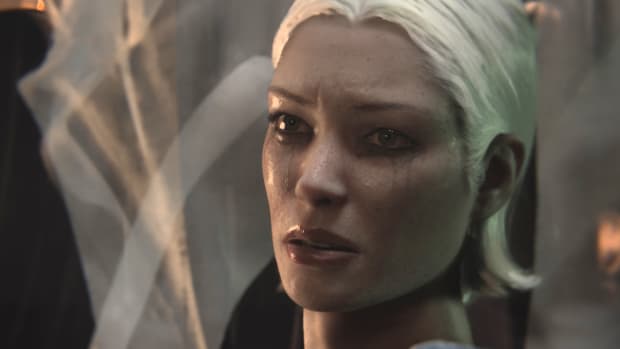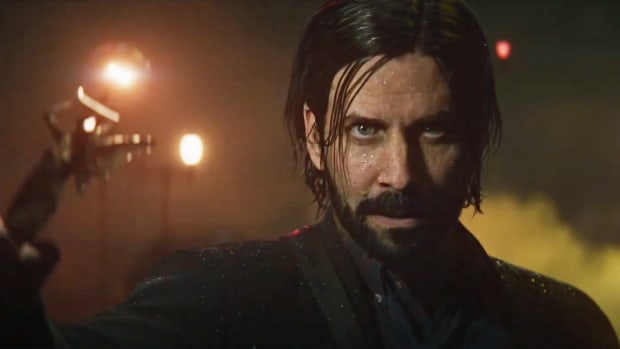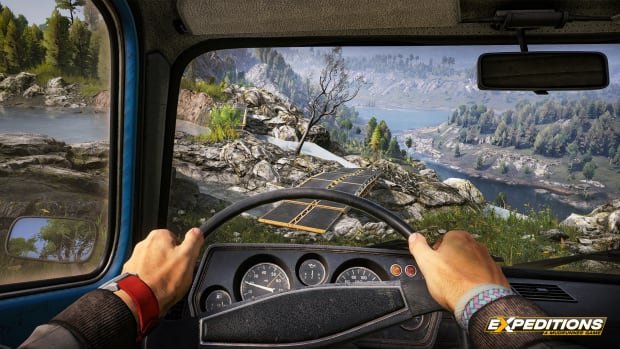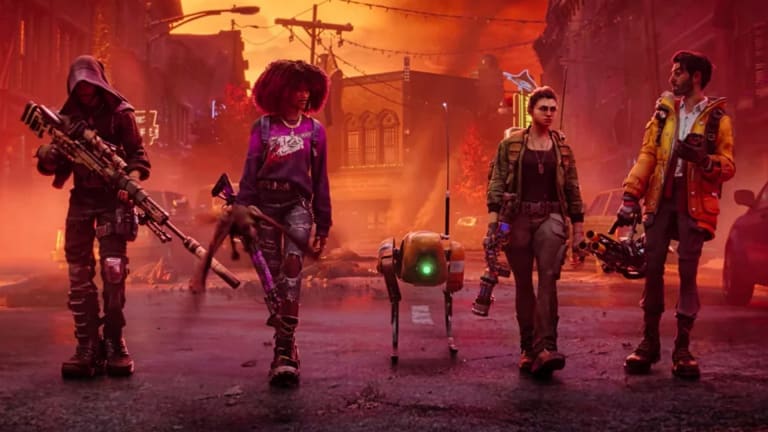
Redfall review – immaculate vibes and a solid co-op shooter
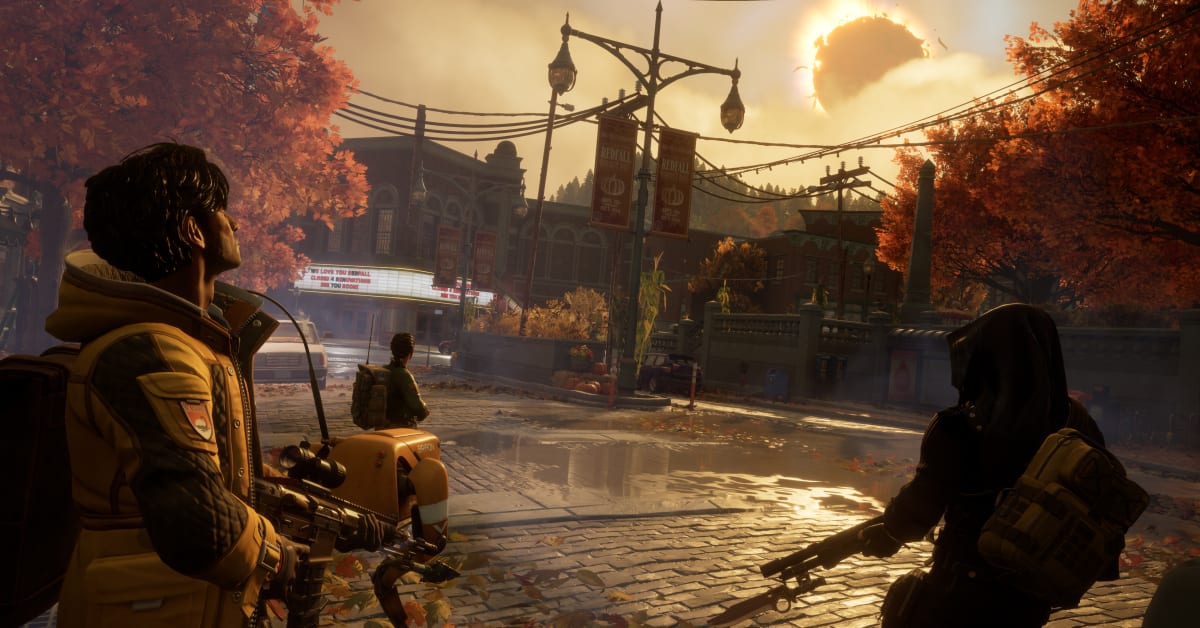
Redfall is a slice of contemporary American Gothic from the minds behind Dishonored and Prey. Besides being killed by UV rays or having a stake driven through their hearts, you can forget everything you know about vampires when you step into Redfall. Garlic and religious iconography can’t hurt rich scumbags who found a way to live longer by bleeding us dry. Sure, they can’t see themselves in a mirror, but there are no ray-traced reflections at launch.
You can forget a lot of things you know about developer Arkane Austin, too.
How do you feel when you look in a mirror? I see scars and imperfections. My past. My hairline (gone). All of my choices, good and bad.
Looking at Redfall – knowing all of Arkane’s past choices – brings with it a series of expectations. This is one of the only big developers that made games where player expression is of utmost importance, but Redfall is different.
Those who want to compare it unfavorably might bring up Anthem, RPG maker BioWare’s failed sidestep into the co-op loot & shoot genre, but I feel that would be unfair. Redfall isn’t perfect, but it is interesting.
While the reveal trailer accidentally tricked people into thinking they were getting a Left 4 Dead-like, the closest point of comparison to Redfall would actually be Far Cry. It’s perfectly fine to play on your lonesome, but the chaos ramps up as you add in more players, to a total of four. Starting from a home base compound, you head out into the world to take on missions where you sneak and shoot your way to an objective.
These objectives are mostly the same – kill a special vampire, get an item, etc – but the setting keeps you engaged. If you asked me to recall a Far Cry mission with a gun to my head, I’d probably bring up burning down a weed farm to Skrillex. That was three games ago! If you asked me to remember two, I’d get shot in the head.
Redfall is full of moments I’ll remember. Discovering a corpse slumped next to a “please wait to be seated” sign in a restaurant. Finding a note about someone using a flare gun in a cemetery, following in their footsteps, and finding an optional encounter by firing one myself. Placing a red candle in a window to ambush a vampire predator who’s been stealing children from their beds. Creeping through creaky old houses as the wind whistles through open windows. Marching across a dried seabed to reach a lonely lighthouse. Turning off the UV perimeter at a Bellwether security camp and watching as they’re overrun. An abandoned trailer park strobing in the blue of a police siren.
Each building, stuffed with a life lived – taxidermy, ornaments, paintings, family photos – has a dark past to uncover. Arkane’s level design architects and narrative designers once again show why they’re the best in the business. The town feels like a real place, from the farmsteads of the second map to the underground car parks and parkour rooftop runs of the first.
Another thing I appreciate about it is how untethered you are. Play with a friend and you’ll get bonuses for sticking together, but there’s nothing forcing you to. If you want to play with three other people and all explore a different corner of the map, it allows you to do that, even if you’re on a mission. It’s refreshing in a genre filled with some variation of this fail state: “You are leaving the mission area, turn back.” There’s none of that here. Go where you want.
In fact, you’re encouraged to come at missions from different angles. I played Devinder (each of the four characters has their own personality, history, and reasons for being here, and conversations reflect that more than they do in most games of this type), a cryptozoologist from Britain, who comes kitted out with a translocation device. Throw it somewhere and you can teleport to wherever it lands. Obviously, the device is much smaller than a person, so you soon realize that you can fling it into places you couldn’t usually reach and enter buildings from the most devious breach points. And even when not playing as Devinder, almost any surface in the game is climbable. Sometimes the geometry – particularly on cliffsides – isn’t well suited to this freedom, making climbing occasionally frustrating, but it’s worth the pain to have this level of freedom in a game like this.
Gunplay is also surprisingly good. My main gripe with loot & shoot games is how they turn every combat encounter into a war of attrition. That’s not the case here. If your weapon is sufficiently powerful, a headshot will down most human enemies in one. Vampires are a different matter since they have to be weakened and staked, burned, electrified, or otherwise obliterated to kill for good, but that’s to be expected. They’re freaking vampires, etc. Weapons range from your usual assault rifles and pistols all the way to fun Arkane stuff such as stake launchers, UV guns, and flare pistols.
Redfall doesn’t have the same physicality as Arkane’s other games, which are full of physical props that fling around when manipulated, but it almost makes up for it in chain reactions – oil slicks, vehicles, gas cans, and electrical outlets can all be turned on your enemies. It could have done with more feedback when you blast someone point-blank with a shotgun, but it’s satisfying to see the bodies ragdoll down slopes as their weapon ejects from the hands and pings across the map. Dusting vampires is always a thrill, too.
The second open world map feels like where Redfall comes into its own. Once you arrive here, you’re plonked into the middle of a vampire civil war, with various factions battling it out over territory. It makes the world feel much more alive, thanks to distant gunshots and little skirmishes that you sometimes chance upon as you head out on a mission.
Then there’s the stuff that’s not so good. If you plan to play Redfall solo, you’re missing out on seeing how the different character powers synergize together, for a start. People who are spoiled on the ability combos of Dishonored might feel short-changed. It also feels like they weren’t all created equal – the sniper character’s raven feels almost like a joke when compared to Devinder’s electrical pylon.
Enemy AI also leaves a lot to be desired. Stand next to a patch of death mist and human enemies will happily run into it and choke to death. It never seems like enemies are working together in an intelligent way, even on higher difficulties. They just get better at shooting you, and it already feels like they barely ever miss, even on the easier modes. Vampires also have the ability to phase through walls, but this feels like a technical solution to make floating enemies play well with interiors – it’s not clipping, it’s magic!
Elsewhere, the boss fights that bookend each chapter are basically an embodiment of the stuff I usually don’t like about this genre: big bullet sponges that you pump all of your ammo into while strafing around an arena. Your mileage may vary, but Redfall’s best assets are its level design and atmosphere, and these have neither.
Still, despite those issues (and some technical problems which I’ll talk about below), I enjoyed my time with Redfall. It’s OK to feel sad that Arkane made this instead of Dishonored 3 or another immersive sim, but you have to judge what’s in front of you and not what you want it to be. What we have is a solid co-op shooter created by a team that’s never made one before, set in the team’s first-ever open world, created in the midst of a pandemic and an acquisition. Not an easy road.
Personally, I’d rather play a co-op shooter that’s flawed and interesting than the third iteration of a hyper-polished template – Far Cry 2 will always be more interesting than Far Cry 6 and the Breaking Bad man can’t even change that. Redfall has a personality all of its own. If Arkane stands in front of a mirror and takes stock, it will probably see all the scars and imperfections, too, but it’s better than seeing no reflection at all.
Score: 7/10
- Story and narrative: 7/10
- Technical performance: 6/10
- Art: 8/10
- Audio and music: 8/10
- Mechanics and systems: 7/10
Version tested: Xbox Series X
Redfall technical breakdown
Redfall occasionally buckles under its own ambitions. Arkane Austin was keen to create an open-world co-op game where players aren’t tethered together and can freely explore the world, even when on missions. This approach has had some obvious trade-offs, such as the locked 30fps even on the most powerful Xbox console.
Even at this lower frame rate, distant buildings sometimes take on a plasticine look as their textures wait to load in. Even close up, sometimes the blood graffiti and signage are indecipherable because of this texture pop-in.
Although it only happened a few times for me, occasionally enemies will spawn on top of you if you’re moving too quickly across the map. This also makes it difficult to set up long-range fights from time to time, as enemies sometimes don’t spawn until you’re close enough.
You’ll also see plenty of clipping and other weirdness, such as corpses whose heads snap around, but let’s put that down to vampire magic.
Occasionally, you’ll have to reboot the game due to audio issues, or the ability to crouch being locked out because the game thinks you’re still in a menu.




